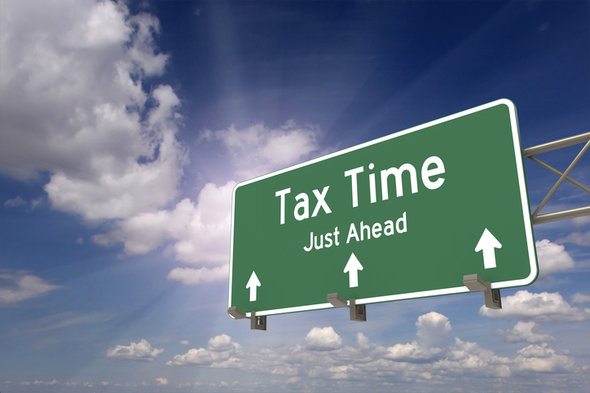In December 2017, President Trump signed the new tax plan into law. While most of the changes from the plan went into effect on Jan. 1, 2018, they did not affect taxpayers when they filed their federal income taxes in 2018 for the 2017 tax year. However, some parts of the tax plan applied retroactively. A small number of taxpayers saw changes to their 2017 taxes as a result. As of 2019, all changes in the tax law were in effect. These changes are currently scheduled to expire after the 2025 tax year. If you need help planning out your tax situation, consider working with a financial advisor.
Tax Plan Changes That Affect the 2017 Tax Year
There were only a couple of provisions in the tax plan that applied retroactively. That means they affected your 2017 taxes (what you filed by April 2018).
One notable change is the expansion of the medical expenses deduction. This deduction allows filers who itemize their deductions to claim medical expenses that exceed a certain percentage of their adjusted gross income (AGI). The deduction amount was scheduled to be 10% for 2017 and 2018. The new tax plan will lower that threshold to 7.5%. The lower threshold will allow more to qualify for the deduction. (Just note that the threshold went back up to 10% for 2019.)
Tax Plan Changes That Went Into Effect in January 2018
The majority of the new tax plan took effect on Jan. 1, 2018. These changes did not affect the 2017 taxes that you filed by April 17, 2018. Here are some of the big changes that officially became law at the start of 2018 (and affect the 2018 taxes that you paid in 2019).
- Federal income tax rates decreased for almost every bracket. There are still seven tax brackets with marginal rates of 10%, 12%, 22%, 24%, 32%, 35% and 37%.
- The standard deduction nearly doubled to $12,400 for single filers (up from $6,350 in 2017) and $24,800 for joint filers (up from $12,700 in 2017).
- The personal exemption, which is $4,050 for 2017, has been repealed for the 2018 tax year (i.e. the taxes you file in 2019).
- The state and local tax deductions have a cap of $10,000. It had no cap previously.
- The federal estate tax exemption nearly doubled from $5.49 million in 2017 to $11.4 million now in 2019 and 2020.
Tax Plan Changes That Went Into Effect in February 2018

Because of the changes to the federal tax brackets, employers will need to withhold a different amount of tax from their employee’s paychecks. The IRS released their new withholding guidelines mid-January and workers saw changes to their paychecks starting Feb. 15, 2018.
This change in tax withholding makes it a good idea to double-check your paychecks to make sure that your employer withheld the correct amount. You may also want to check your W-4. That form will tell your employer how much to withhold from your paycheck.
Tax Plan Changes That Went Into Effect January 2019
The tax plan initially included a few provisions that weren’t going to take effect until 2019. For one, the plan tried to repeal the individual mandate of the Affordable Care Act (Obamacare). It’s because of this mandate that you need to pay a tax penalty if you do not have health insurance. The tax plan didn’t repeal the mandate until the start of 2019 though. That means you would have still paid a penalty if you didn’t have health insurance in 2018.
Another change for 2019 is that people no longer were able to deduct alimony payments from their federal taxes.
When Do the Trump Tax Reform Changes Expire?
It is important to understand that the Trump Tax Plan is full of temporary changes unless Congress decides to change that. This is similar to most other tax breaks or tax changes within the law. The current changes that have all been in effect since at least 2019 are set to expire after the 2025 tax year. This is because of reconciliation rules that blocked the Democratic party in the Senate from filibustering the tax reform.
If you’re interested in better understanding how the tax reform is impacting your money, consider checking out the current tax brackets for the tax reform bill.
The Bottom Line

Most of the new tax plan took effect on Jan. 1, 2018, and all changes were in place by 2019. The changes that came with the Trump tax reform bill will expire after the 2025 tax year unless Congress decides to extend the plan. There also could be further tax changes around that time, depending on what political party has control of the government in 2025.
Tips for Tax Planning
- You may want to find a financial advisor to help you with taxes. If you are having a hard time keeping up with the new tax laws, a financial advisor who specializes in taxes will be able to help you make sense of everything. They can also help you create a financial plan depending on how any tax reform may impact your personal finances. SmartAsset’s free tool matches you with up to three vetted financial advisors who serve your area, and you can interview your advisor matches at no cost to decide which one is right for you. If you’re ready to find an advisor who can help you achieve your financial goals, get started now.
- Do the math on your paycheck. New marginal tax rates mean that employers will need to withhold a different amount of tax from employee paychecks. According to the IRS, 90% of people will see more money in their paychecks. Do the math for your first few paychecks of the new year (especially right after Feb. 15, 2018) to make sure your employer is withholding the correct amount. Here’s a free, easy-to-use paycheck calculator to help you.
Photo credit: ©iStock.com/alexsl, ©iStock.com/alfexe, ©iStock.com/AntonioGuillem
